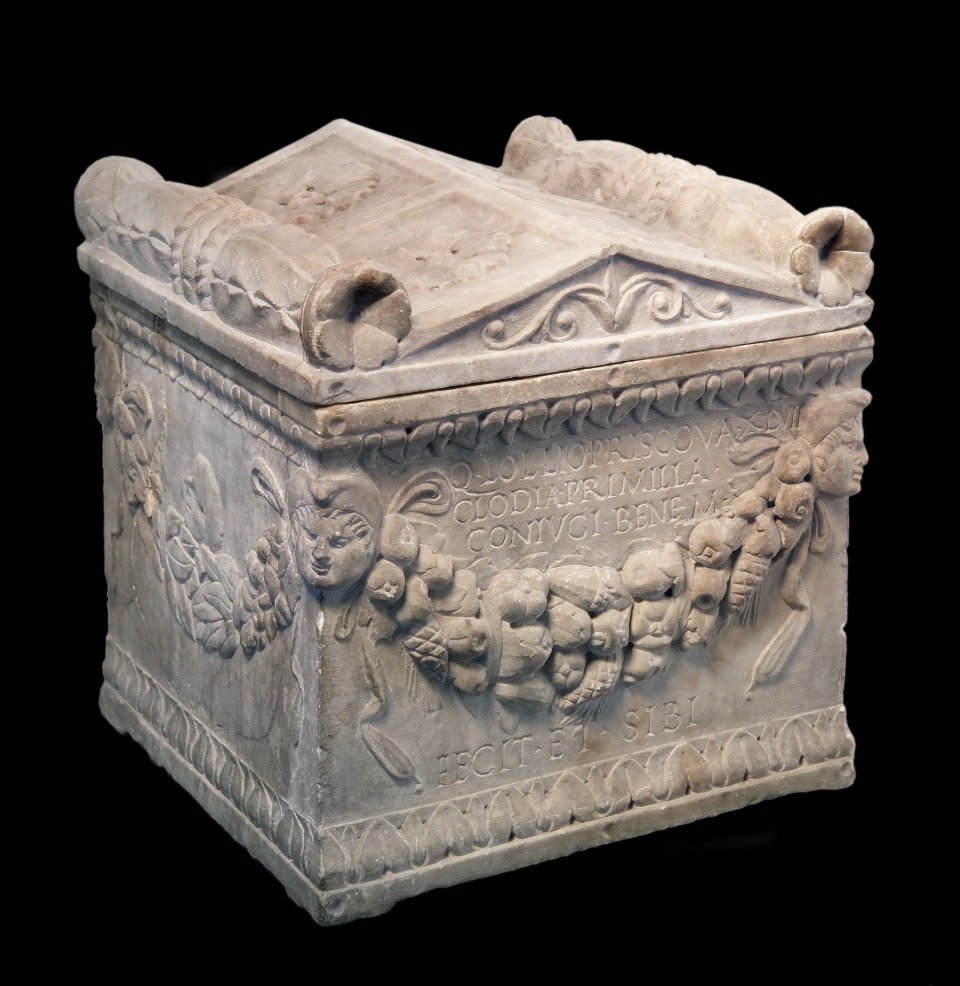Cremation was one of the common forms of burial in antiquity. The cremated remains were buried in containers of various shapes and materials. In the course of the centuries, ash boxes were made, some of them elaborately designed.
The ash box of Q. Lollius Priscus, donated for him by his wife Clodia Primilla, shows a garland between heads with Phrygian caps on the front, with the Latin inscription above and below.
Q. Lollius Priscus was a member of the gens Lollia, a plebeian family in Rome. Members of this family are not mentioned in inscriptional sources before the 1st century BC. The form of his wife's name, Clodia instead of Claudia, also points to a plebeian origin. (AVS)
Former collection Friedrich Culemann, Hanover; Count Eduard von Kielmannsegg (1804-1879), Hanover; Collection von Wallmoden
en

